- News
- Reviews
- Bikes
- Components
- Bar tape & grips
- Bottom brackets
- Brake & gear cables
- Brake & STI levers
- Brake pads & spares
- Brakes
- Cassettes & freewheels
- Chains
- Chainsets & chainrings
- Derailleurs - front
- Derailleurs - rear
- Forks
- Gear levers & shifters
- Groupsets
- Handlebars & extensions
- Headsets
- Hubs
- Inner tubes
- Pedals
- Quick releases & skewers
- Saddles
- Seatposts
- Stems
- Wheels
- Tyres
- Tubeless valves
- Accessories
- Accessories - misc
- Computer mounts
- Bags
- Bar ends
- Bike bags & cases
- Bottle cages
- Bottles
- Cameras
- Car racks
- Child seats
- Computers
- Glasses
- GPS units
- Helmets
- Lights - front
- Lights - rear
- Lights - sets
- Locks
- Mirrors
- Mudguards
- Racks
- Pumps & CO2 inflators
- Puncture kits
- Reflectives
- Smart watches
- Stands and racks
- Trailers
- Clothing
- Health, fitness and nutrition
- Tools and workshop
- Miscellaneous
- Buyers Guides
- Features
- Forum
- Recommends
- Podcast
 BOTY201617road-img.jpg
BOTY201617road-img.jpgroad.cc Road Bike of the Year 2016-17
It’s been a good year for the road bike, with even more competitive offerings from a wide range of bike brands than ever before, all making choosing a new bike a tricky task. We've tested some real zingers in 2016 and putting together a top ten has been no easy task, but here is the Road Bike of the Year 2016-17.
There have been some interesting developments with technologies like aerodynamics and disc brakes firmly establishing themselves. Looking back through the many road bikes we’ve reviewed in the past year, often it's not the bikes packing the latest TLA that have done really well and stood out in a sea of carbon, but the ones with a sensible design and solid equipment.
Disc brakes might be popular, and we could be accused of constantly singing their praises, but only four of the ten bikes in this list are equipped with disc brakes. That’s four more than last year. We’ve not gone out of our way to test disc brake bikes, but with many companies launching disc-equipped road bikes, we’ve been testing more this year than in previous years. It’s worth adding that many of the new disc bikes currently being launched don’t replace their rim brake counterparts, though that is the case in some examples. What we’re saying is that generally, you have a choice.
This category is price capped at £3,500. We could just have easily made it £2,500 or £4,500, but we decided that this gives a good spread of road bikes at a wide range of prices to suit lots of different budgets, whether you’re looking for your second, third or fourth new road bike. You’ve got to draw a line in the sand somewhere.
And so to the winners…
10. Tifosi SS26 — £3,499
Tifosi might not have the cachet of some bigger or more well-established bike brands but look past the label here and you find a stunning road bike that will go toe to toe with any mainstream rival. The full carbon fibre frame and fork and 7kg equipment build meant the SS26 was no slouch when the desire to ride fast came over us. The handling is a revelation, with a level of precision that makes it really direct and highly engaging. The geometry, with its steep head angle, short wheelbase and long top tube, creates a bike that feels so balanced and sure-footed underneath it really lets you hang it all out for maximum speed.
It's a great package, focused mainly on speed, making it ideal for the racer or quick sportive rider. If you have three and a half grand to spend on a fast road bike, it should definitely make it onto your shortlist, as it has on our Bike Of The Year shortlist.
Why it's here: Lightweight package with racy geometry provides a positive ride.
Read our review of the Tifosi SS26.
9. Canyon Aeroad CF SLX — £3,249
Aerodynamics has been one of the biggest developments in road bike design in the past few years, and Canyon’s latest generation Aeroad is an aero road bike with all the speed you’d expect, in a package that won’t break the bank. We tested the cheapest model at the time, but unfortunately it is no longer available in the 2017 range. Now, the cheapest Aeroad costs £3,249. While it's more cash and has the same Ultegra groupset, it does come with Reynolds Strike Carbon Clincher wheels, so you're getting a considerable upgrade in that department. It also reflects the effect of the Brexit vote as well, but Canyon aren't alone, many 2017 bike prices have increased.
Every surface of the frame and fork has been shaped to minimise drag so you can ride faster for less power. As impressive as it is when laying down the power, the Aeroad offers a surprisingly comfortable ride for a bike that is built purely for speed. Civilised it may be at lower speeds and over long distances, but it's at higher speeds that the Aeroad's character is most appealing. It's an entertaining ride, with quick responses and a satisfying balance at higher speeds that all help it set a benchmark for aero road bike performance. The direct-sales brand has really established itself in the UK over the last few years but it is in producing an excellent product that really sees the Aeroad featuring this highly on our list.
Why it's here: Fantastic value for money (even at the higher 2017 price) with stunning performance.
Read our review of the Canyon Aeroad CF SLX.
8. Cannondale SuperSix Evo Disc Ultegra — £2,799
Cannondale's SuperSix Evo has long been one of the best race bikes, providing a fine blend of performance, crisp handling and comfort. Cannondale has long been a company known for innovation and forward-looking design, so it was only a matter of time before the Evo got the disc brake treatment. We tested the cheapest of three models launched in 2016 for the 2017 model year and were happy with the familiar ride and the same refined handling and smoothness that we’ve come to like about the previous Evo.
The reason for this similarity is that Cannondale has retained the geometry providing the agility and nimbleness the original Evo was renowned for. Cannondale has worked its engineering magic and created a package that manages to retain all the key ingredients that made the regular SuperSix Evo such an agreeable bike, while adding the benefits – greater stopping power and control – that hydraulic disc brakes bring.
Our model was slightly let down by too-heavy wheels but we were willing to overlook that because it was otherwise a really well-rounded package with Shimano hydraulic disc brakes and smart contact points that made it a compelling ride. If the wheels had been lighter it might have been a more convincing pitch for the top spot. That and the price increase from £2,499, when tested to £2,799 this year, removes some of the shine of an otherwise impressive package.
Why it's here: All the super performance with the extra benefit of improved braking performance.
Read our review of the Cannondale SuperSix Evo Disc Ultegra.
7. Merida Scultura 6000 — £2,000
It was close between Cannondale SuperSix Evo Disc and the Merida Scultura here. They're both race bikes with an aggressive geometry and carbon fibre frames, but the Merida just edged it because it offers a lighter package for less money, especially with the 2017 price drop. You're getting a high-quality carbon frame packed with cutting-edge nanoparticle carbon technology, just the thing to drop into a dinner party conversation.
Merida has used a carbon fibre that's had nanoparticles added. By increasing the stiffness of the frame material without losing strength, and so be able to use less of it, Merida has been able to drop the weight without creating a loss in efficiency. This allows for the larger tube profiles you see and things like the increased size of the BB386 over a standard threaded bottom bracket. Aerodynamics was another target for Merida, using computational fluid dynamics in the design process and wind tunnel testing of various incarnations. It even used a dummy with moving legs to replicate the effect the rider's pedalling has on wind resistance.
The handling is a high point. It's direct and quick but never twitchy, especially once your speed starts to increase. You're getting some decent levels of grip here from the Continental tyres, don't get me wrong, but the frame – especially the front end with its tapered head tube and fork steerer – is so solid it never moves a millimetre off its line. The 6000 always feels planted; you know exactly what the bike's doing all of the time as there is so much feedback. It's impressive that Merida has been able to damp the ride so much without muting the feel – it's a clever balance.
While the effect of the Brexit vote has resulted in price increases of several hundred pounds in some cases, this is one bike that bucks the trend; it's actually £300 cheaper than when we tested it. Not only that, but Merida has addressed some of our concerns about the component choices, and slapped a full Shimano Ultegra mechanical groupset on the frame with Fulcrum Racing Expert wheels.
Why it's here: A light bike with a cutting-edge carbon frame and an improved spec for 2017 makes it a real contender.
Read our review of the Merida Scultura 6000.
6. Boardman Elite Air 9.2 — £2,299
Boardman Bikes are well respected and the new Elite Air 9.2 is a bike to take seriously if you want a high-performance aero road bike but don’t have silly money to spend. Let’s start with the value for money, because Boardman has specced most of a Shimano Dura-Ace groupset with an FSA SL-K Light carbon chainset, so you’re getting first class gear shifting performance and solid power transfer from the cranks. The parts are bolted to a full carbon fibre frame that makes use of the latest understanding of aerodynamics, with every surface shaped and curved to reduce drag, so you can ride faster for less energy.
Some aero bikes can be a handful, but thankfully the Air 9.2 is a very neutral ride most of the time. Considering the amount of side profile, it's really not that much of a handful in the wind. Position-wise the Air 9.2 has another trick up its sleeve. The aero seatpost has plenty of depth and Boardman has made good use of it by tapping a series of four holes into the alloy insert at the top. The saddle clamp screws down into one of them, allowing you to quite simply alter the saddle position and the effective seat tube angle. Boardman sells a lot of these bikes for triathlon; the top-of-the-range Air 9.8 is the bike the Brownlee brothers habitually use to win stuff. The seatpost allows a steeper effective seat tube angle which is better for tri, and also for time trialling. The Air 9.2 would certainly be an effective time trial bike with the addition of a set of clip-on aero bars.
The best part of three grand isn't exactly spare change, but the Boardman Air 9.2 scores very highly in the value stakes, stacking up well against the competition. There aren't many aero bikes that offer Dura-Ace below £3,000, and although you're not getting the full groupset it's still a great package for the money.
It's fast, the handling is neutral and responsive, it's firm but not uncomfortable, and it responds well under power. There are a few minor niggles – the brakes aren't the best, and some of the components are worth an upgrade to get the best out of the frame – but if you're looking for a fast bike for racing, triathlon or even time trialling then it's very much one to consider.
And if you act quickly, the bike is currently being discounted by Boardman to £2,099.
Why it's here: Aerodynamics without the eye-watering price tag.
Read our review of the Boardman Elite Air 9.2.
5. Giant Propel Advanced 1 — £1,749
If you want an aero bike without breaking the bank, then there are few better choices than Giant’s £1,599 Propel Advanced. Slightly going under the radar compared to other aero road bikes, the Propel is no less advanced or race-proven, and as Mat found when he tested it, it provides that speed that anyone choosing an aero road bike expects. While it’s fast, it’s not a one-trick pony. The frame has plenty of stiffness for a very precise and direct ride. It’s packaged with a reliable Shimano Ultegra groupset and Giant’s own brake calipers, designed to sit flush with the frame and fork to decrease drag, and it all comes together well to form an excellent value and performance package.
The Propel Advanced 1 is a very fast bike (for people who object to a bike being described as 'fast', that means that for a given power input it is quick compared to competitors). Tuck yourself down on the drops, hit the pedals hard and you're rewarded with impressive speed for your efforts. This thing can really shift. The Propel Advanced 1 isn't simply a one-trick pony. Aside from its aero credentials, it's a bike with plenty of frame stiffness. Giant uses what it calls its 'PowerCore' design, meaning that the bottom bracket/chainstay area is oversized. Although it uses a 24mm rather than a 30mm axle, the bearings are incorporated within the BB shell. The result is a bottom bracket that barely moves off-centre even when you're duking it out in a Marcel Kittel streak for the line.
The Propel Advanced 1 comes with a mostly Shimano Ultegra mechanical groupset. The only significant deviation from the theme is the brakeset, and there's a good reason for that. Giant specs its own SpeedControl linear pull (V-type) brakes because the arms sit in line with the fork legs and seatstays to minimise drag. Pretty much all the other components are Giant's own. They might not have the glamour of kit from some other brands but it's hard to fault the performance. The Contact aluminium bar and stem don't flex much, the Performance Road saddle is comfortable if a little bulky, and the P-A2 Aero rims spin smoothly on sealed bearing hubs. They're a little flexy and are probably worth an upgrade to something deeper further down the line, but they've served me well through a lengthy test period.
Why it's here: Superb aero bike with race-proven pedigree that offers a splendid ride character.
Read our review of the Giant Propel Advanced 1.
4. Cannondale CAAD12 Disc Dura Ace — £2,499
Aluminium is long what Cannondale has been known for and it’s refreshing that it hasn’t given up on the metal in this age of carbon. Quite the opposite, the US firm has continued to plough resources into developing aluminium and the CAAD 12 replaced the venerable CAAD 10 (there was no CAAD 11) with a frame that delivered a lighter, stiffer and more comfortable ride.
The new CAAD12 is a finely honed bike with a level of comfort and refinement that makes you wonder why you would buy anything else, and certainly, ask questions of the short lifespan of aluminium at the cutting-edge of racing bicycle technology back in the 90s. It's so smooth that it outshines many carbon fibre road bikes I've tested for road.cc over the years. The handling is fast and direct when being ridden at pace, and it never becomes skittish or erratic. The steering is direct and sharp; it's a very focused bike and the material and geometry come together to form a really beautiful whole. There's an impressive degree of compliance from the rear triangle. That Cannondale has eked out such compliance from the frame is highly impressive. The combination of the changes to the rear triangle, with the flat seatstays devoid of a brake bridge and the skinny seatpost, help to filter out much of the vibration that can lead to an unsettled ride.
The disc brakes add a bit of weight, but the extra stopping power and all-weather performance make the CAAD 12 a dependable option for year-round riding, even in the lack of mudguards does limit its versatility to be pushed into a super commuter role. With the Shimano Dura-Ace components, the CAAD12 Disc is impressively a whisker over 8kg. More weight could probably come off with a change to some lighter components, but it's not a big factor when riding in the hills. The high stiffness of the CAAD12 makes it a great climbing bike, with very good power transfer and the stiff front end resisting flex completely.
If you shop around, you can still get this 2016 model and we've found it discounted down to £1,999, and you could use the cash you save to upgrade some parts to shed a bit of weight.
Why it's here: Aluminium at its best, backed up with the disc brake performance.
Read our review of the Cannondale CAAD12 Disc Dura Ace.
3. Focus Izalco Max Disc £3,299 (price as tested)
Another disc-equipped road bike makes our top ten, and this time it’s one of the best entrants to the growing disc-equipped race bike market for 2016. Based on the company’s race bike of the same name the disc versions sprouts flat mount disc brakes and thru-axles, using the company’s very trick Rapid Axle Technology (RAT) system. It makes fitting and removing a wheel much easier than any other thru-axle currently in use.
Impressively, the Max Disc frame weighs a claimed 790g for a size 54cm, with a fork weighing 320g. Those are good numbers for a non-disc carbon race frameset, let alone one beefed up for disc brakes. The frame combines very modern details with one very conventional one – externally routed gear cables. This is deliberate: routing the cables externally makes the frame 50g lighter, and it also provides easier maintenance for the AG2R team mechanic. But any home mechanic who has struggled to replace an internally routed gear cable will appreciate this too. Once fitted, hydraulic hoses should never need replacing, so Focus has routed the brake hoses inside the frame and fork.
There are many benefits to disc brakes, but the weight is a particular downside. At 7.5kg this is still one of the lightest disc road bikes we’ve yet tested; the top of the range model is even lighter at 6.8kg. Despite the changes, the Izalco Max hasn’t lost any of its racy performance. It’s fast and agile but with the ability to accommodate 28mm tyres, it can also be a comfortable mile muncher as well. The Izalco Max Disc is definitely one of the best disc-equipped race bikes currently available.
The Izalco Max Disc comes fitted with 25mm tyres, which are rapidly becoming the new 23. Wider tyres help in the comfort department too, of course. The stock Schwalbe One tyres are an excellent choice and inflated to 5 bar (72psi) provide all the smoothness and grip you could want in a fast race bike, without it ever feeling soft or vague at higher speeds. Seated comfort is excellent, no doubt enhanced not just by the seatpost but also the wider tyres and the changes to the frame. It's impressively smooth, not just for a race bike, but even compared with bikes that are designed expressly to be comfortable. Here's a race bike that doesn't beat you up after an hour or two around the Cotswolds lanes.
The model we tested in 2016 is no longer available, and we've not found any retailers still selling it. The cheapest Izalco Max Disc bike in the 2017 range now costs £3,999 (up from £3,299) and instead of the mechanical Dura-Ace/Ultegra/FSA groupset, you get Shimano's Ultegra Di2 groupset and a set of Fulcrum CEX 4.5 wheels.
Why it's here: Stunning performance from a light package with very agreeable handling.
Read our review of the Focus Izalco Max Disc.
2. Giant TCR Advanced 2 Disc — £1,699
Giant’s popular race bike, the TCR Advanced, has been giving a disc brake makeover for 2017 and we managed to test one before the end of the year, ensuring it just sneaked onto the shortlist for this prize giving ceremony. Giant has retained the key details of the regular rim brake TCR, including the geometry, and a visually identical carbon frame. It’s chunky in key places and svelte in others with 12mm thru-axles, and it delivers a very stiff ride with no hint of flex when putting the power down. This bike gets the latest Shimano 105 groupset featuring hydraulic disc brakes, providing ample control in all conditions. Giant's Variant seatpost, held in place by an internal clamp, is designed to flex to a degree in order to improve the ride quality. Along with Giant's own Contact Forward saddle, it provides a smooth feel, especially for a race bike.
Giant is no stranger to disc brakes on road bikes, of course, having given the full disc treatment to the latest Defy endurance bikes when they were launched two years ago, and those models have proven extremely popular. Giant has stuck with 12mm thru-axles front and rear for the TCR Advanced disc bikes to keep everything firm and secure under the forces associated with disc brakes. Hitting the scales at 8.6kg (19.0lb), the Giant TCR Advanced 2 Disc isn't a featherweight compared with rim brake counterparts, but it's a decent weight for a disc brake bike at this price point. It climbs with little fuss, largely thanks to a Shimano 105 compact chainset (with 50-tooth and 34-tooth chainrings) matched up to an 11-28-tooth cassette. Most people will find the 34x28 gear sufficient to get up sharp climbs without too much bother.
Speaking of the geometry, it's exactly the same as that of the rim brake Giant TCR Advanced bikes – all of them, from the £1,049 TCR Advanced 3 right up to the £5,999 TCR Advanced SL 0. We've seen most brands stretching the chainstays out to at least 415mm, following Shimano's recommendation to avoid chain line issues, but Giant has stuck with 405mm chainstays here without any ill effects.
As you'd expect, it's a race orientated setup. We have the M/L sized model here with a 57cm top tube, a 16.8cm head tube and 73-degree head and seat angles. The stack height (the vertical distance from the centre of the bottom bracket to the top of the head tube) is 56.7cm and the reach (the horizontal distance between those points) is 39.8cm.
Hop on board and you immediately know that this is a bike that's intended to be ridden fast. If you want a more relaxed setup you could consider Giant's Defy bikes that I mentioned earlier. The riding position is a bit shorter and they're a little taller at the front end. The TCR Advanced bikes, though, are all about speed, and the geometry reflects that.
Overall, the Giant TCR Advanced 2 Disc is an exceptionally good bike. It's stiff and responsive, it handles superbly and it's comfortable enough to ride all day. Add in the great value groupset and excellent hydraulic disc brakes and you have a winning proposition. And that’s why it’s on the podium.
Why it's here: Retains all the magic ingredients of the popular TCR platform and throws hydraulic disc brakes into the mix.
Read our review of the Giant TCR Advanced 2 Disc.
1. Boardman Road Pro Carbon SLR — £1,799
Another Boardman in the top ten, but it’s the Road Pro Carbon SLR, a new bike launched in 2016, that scoops the coveted top spot. Boardman Bikes have built up a decent reputation for well designed and good value road bikes over the years, and nowhere is this better expressed than in the excellent Road Pro Carbon SLR.
Boardman's designers have played a blinder when it comes to the handling and geometry. The head tube and seat tube angles mirror each other at 73 degrees, and with a top tube length of 55.5cm and head tube at 14cm, the riding position is long and low and pretty aggressive. The facts and figures pretty much mimic that of the Bianchi Specialissima, a pro peloton-ready speed machine, so the SLR certainly isn't going to disappoint you in the bunch. Don't go thinking it's all about out and out speed, though. The Boardman is happy to cruise for hours on end – cruise quickly mind, thanks to its minimal weight – but you don't ntheed to be on the rivet to make it perform. Century rides are well within its remit thanks to its overall comfort levels, and you could even upgrade the 25m standard tyres to some squidgy 28s to soften the blow a little more. The SLR certainly makes a rapid sportive machine.
In the twisty bits, whether on the flat or descending, the Boardman remains a very easy bike to ride fast. The majority of bikes we ride these days have a tapered head tube. The larger diameter at the bottom means a larger surface area and more material, equating to increased stiffness. The SLR uses a 1 1/8in top bearing with a 1 1/2in lower. The whole bike feels great at speed. The smooth ride quality of the frame gives you the confidence to push the SLR hard into bends and back out the other side. There is a lot of feedback going on all the time; even though the frame seems to reduce a lot of the road buzz, it doesn't mute the actual feeling of what the tyres are doing on the road.
The £1,500 to £2,000 price mark is a very competitive one, but the Boardman manages to face stiff competition from direct sales brands with a full SRAM Force 22 groupset and Mavic Ksyrium wheels and an impressive finishing kit. In conclusion, the Boardman Road Pro Carbon SLR is a great bike. It's there to be ridden fast, whether that's eyeballs-out fast or just a rapid average speed on a longer journey. It excites, and you certainly feel rewarded for any effort you put through the pedals. With a great groupset, impressive finishing kit and that smooth-riding frame, for this money, it's very hard to find fault with the SLR.
And that’s why the Boardman Road Pro Carbon SLR wins road.cc Road Bike of the Year.
Why it's here: It's simply everything we look for in a road bike. Great performance, price and handling puts it head and shoulders above the rest.
David worked on the road.cc tech team from 2012-2020. Previously he was editor of Bikemagic.com and before that staff writer at RCUK. He's a seasoned cyclist of all disciplines, from road to mountain biking, touring to cyclo-cross, he only wishes he had time to ride them all. He's mildly competitive, though he'll never admit it, and is a frequent road racer but is too lazy to do really well. He currently resides in the Cotswolds, and you can now find him over on his own YouTube channel David Arthur - Just Ride Bikes.
Latest Comments
- kcr 4 hours 11 min ago
I think Livingston (no "e") has the best cycling infrastructure I have seen in Scotland. It has an extensive network of paths that are actually...
- kcr 4 hours 50 min ago
I'd say it is an extremely rare condition for most cyclists or runners.
- ErnieC 7 hours 36 min ago
or Team Bahrain ... selective outrage.
- newbankgyratory 8 hours 38 min ago
This website offers suitable data: https://www.automobiledimension.com/large-suv-4x4-cars.php
- newbankgyratory 9 hours 11 min ago
Perhaps park the goods in a US Customs Bonded warehouse and then import them out of there when the tariff nonsense settles down?...
- Dnnnnnn 7 hours 7 min ago
Good to see a road.cc review of what must be one of the UK's best-selling 'proper' road bikes....
- PRSboy 10 hours 6 min ago
Another thing ruined by the Americans
- Miller 11 hours 25 min ago
Nice to see WvA featuring in the finale.
- Miller 11 hours 28 min ago
I have known more than one elder statesman of the club die of a heart failure while out on a ride. Sometimes I feel that's about to happen to me,...
- Pub bike 11 hours 45 min ago
Via the "wireless active steering system".

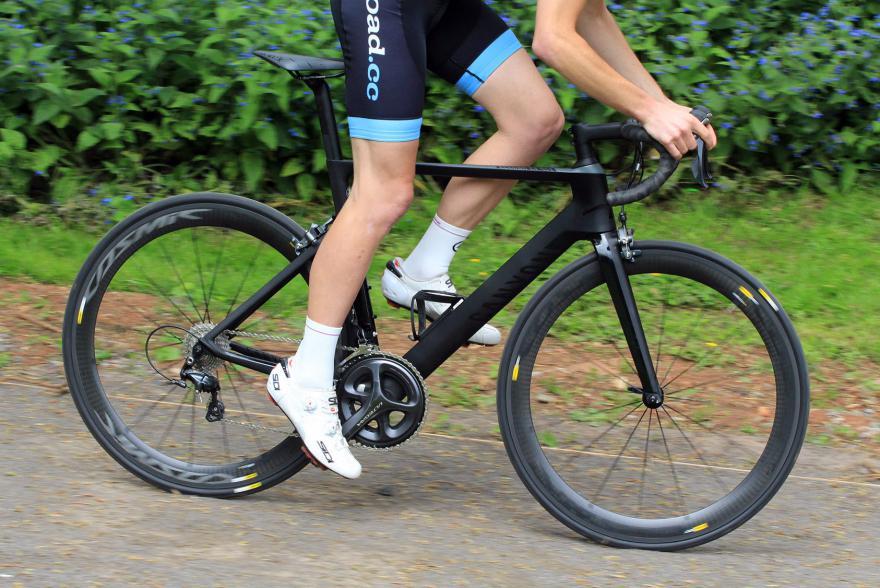
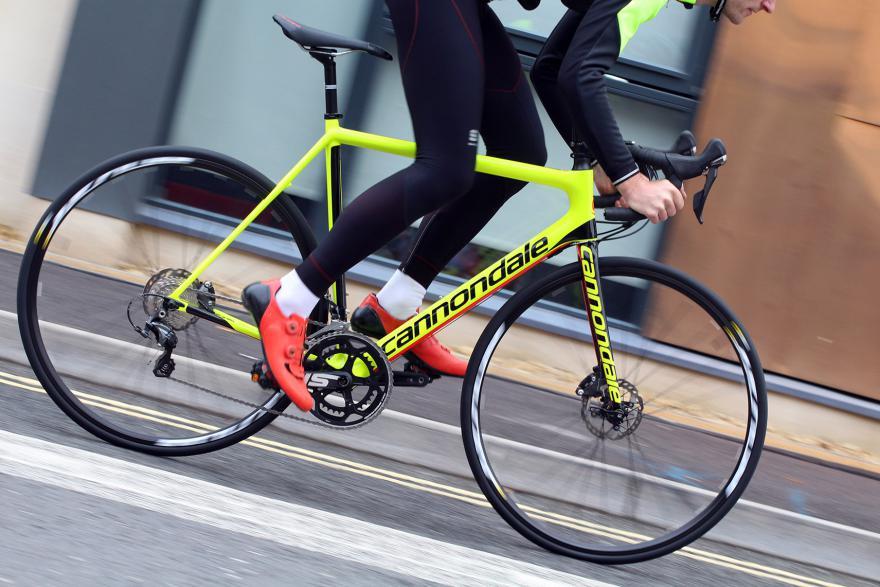
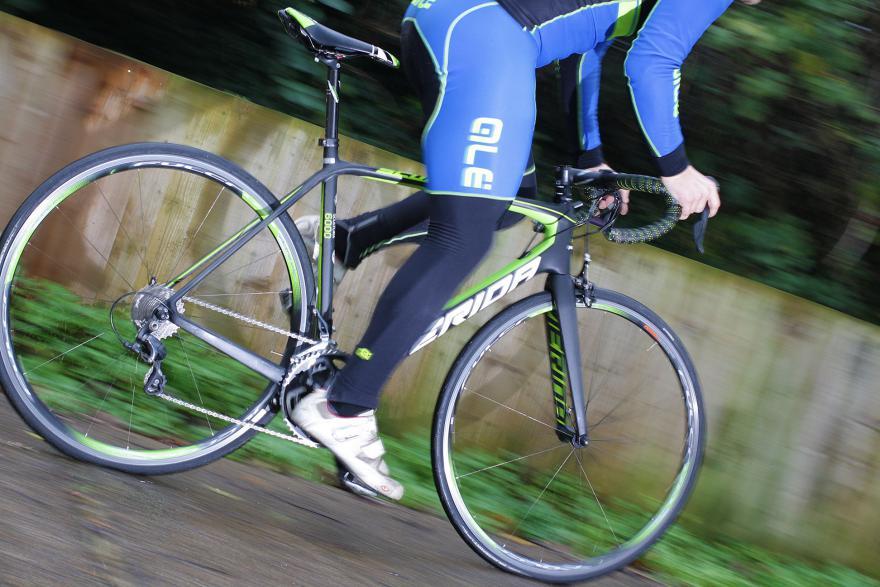
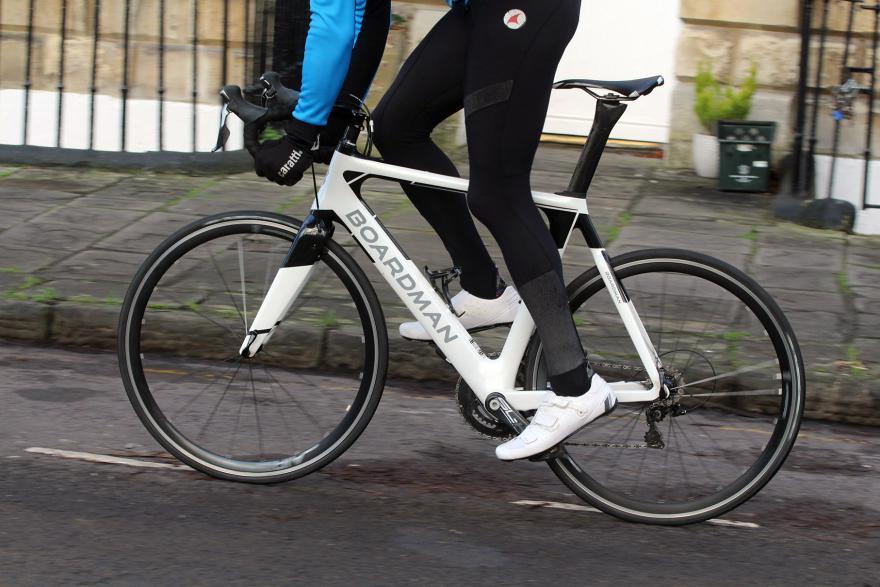
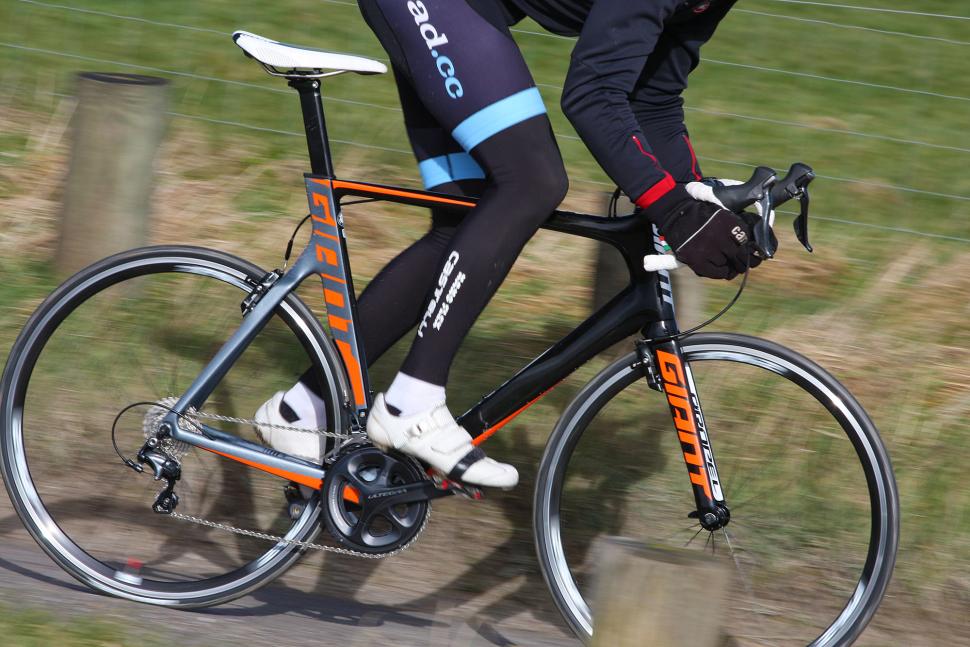
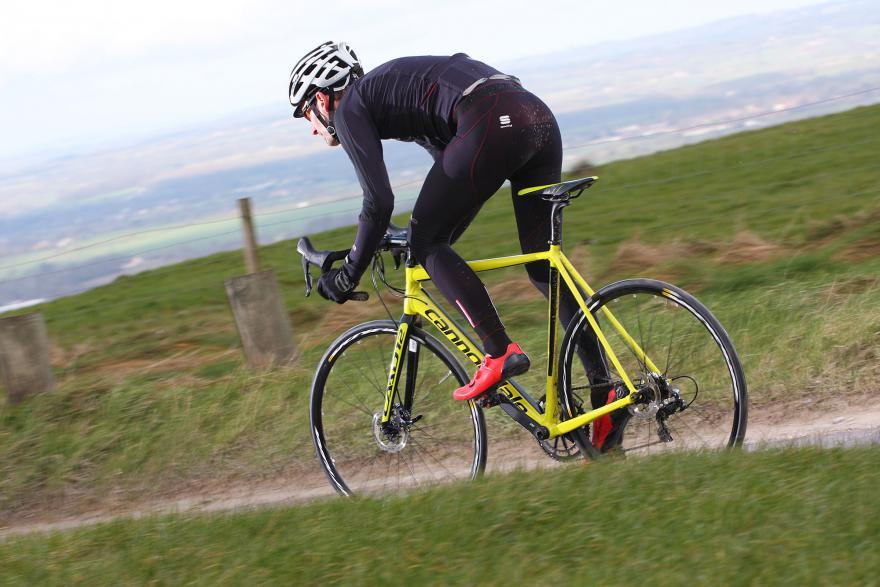
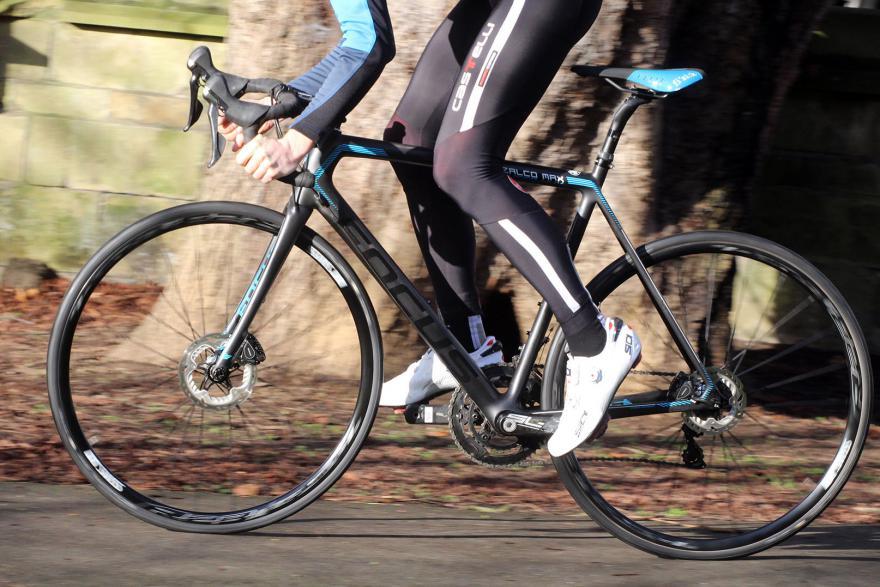
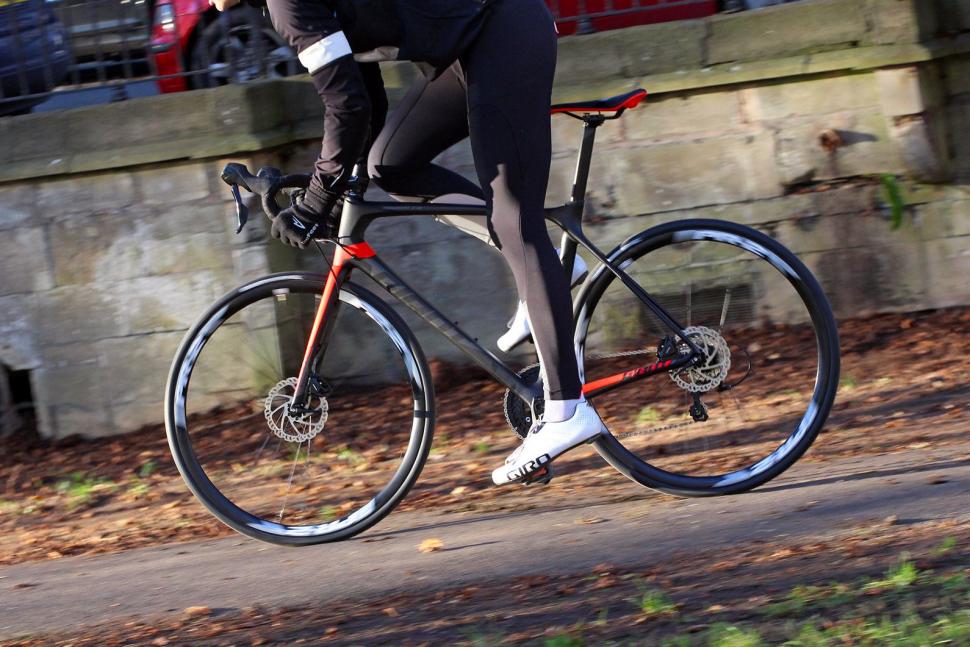
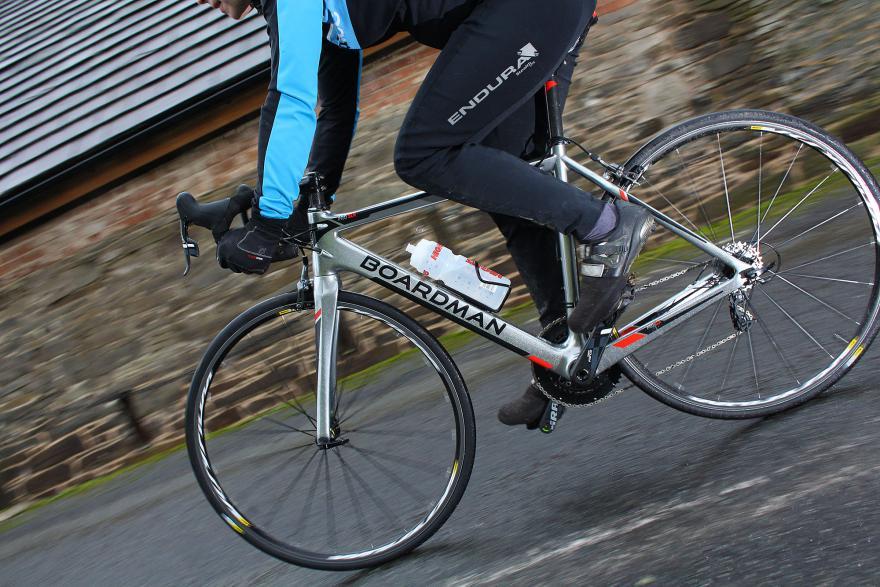
Add new comment
1 comments
My Pashley Guvnor shits all over this lot.